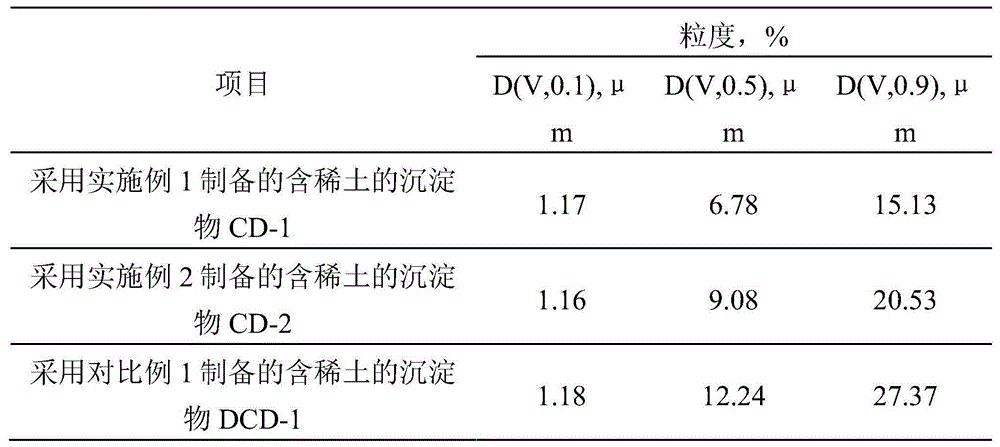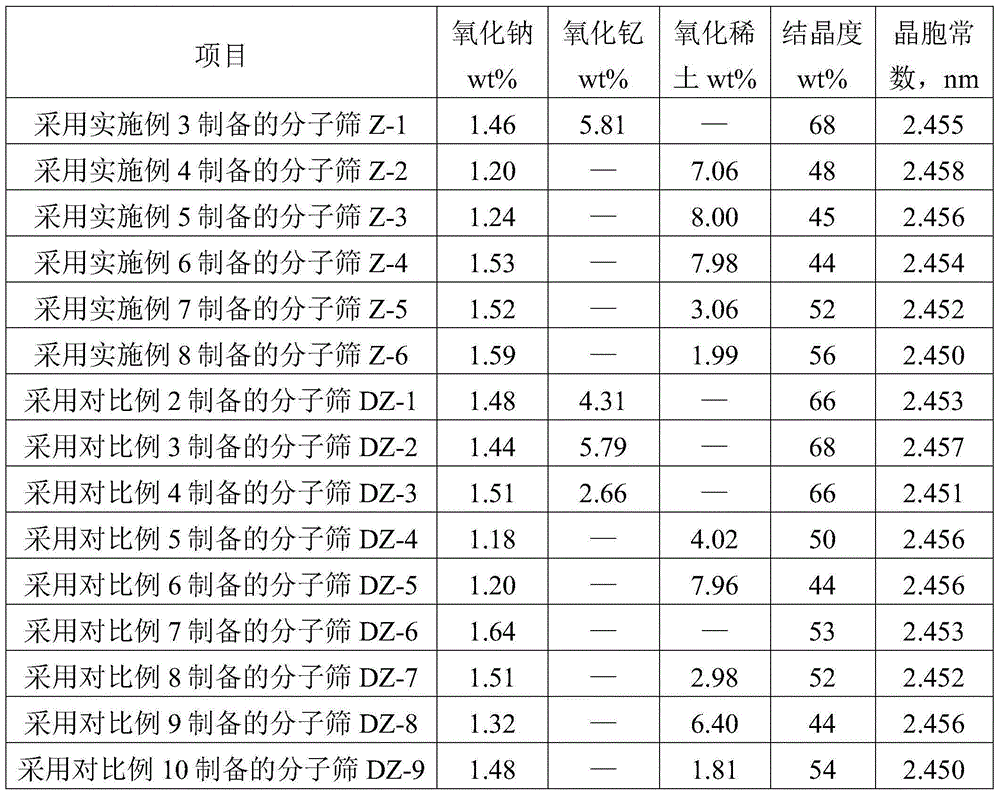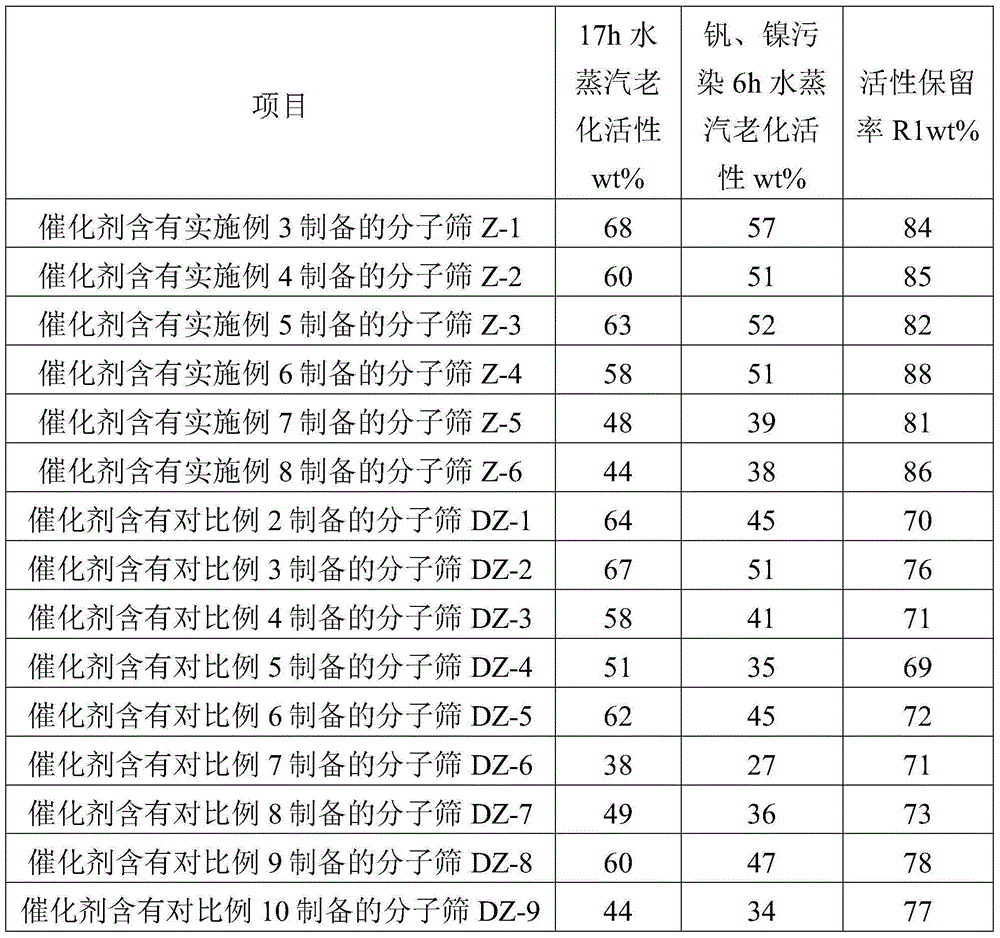Method for modifying molecular sieve
A molecular sieve and modification technology, applied in molecular sieve catalysts, chemical instruments and methods, petroleum industry, etc., can solve problems such as unfavorable heavy metals, deterioration of molecular sieve structural stability, unfavorable uniform dispersion, etc., to increase the outer surface and the degree of dispersion. , Effectively capture heavy metals and avoid the effect of uneven distribution
- Summary
- Abstract
- Description
- Claims
- Application Information
AI Technical Summary
Problems solved by technology
Method used
Image
Examples
Embodiment 1
[0038] Mix 2g of citric acid, 2.48mL of rare earth nitrate and 75mL of deionized water to form a homogeneous solution, then add 2g of ammonium oxalate and stir for 15 minutes to form a rare earth-containing precipitate slurry CD-1.
Embodiment 2
[0040] Mix 2g of ethanol, 2.48mL of rare earth nitrate and 75mL of deionized water to form a uniform solution, then add 2g of ammonium oxalate and stir for 15 minutes to form a rare earth-containing precipitate slurry CD-2.
Embodiment 3
[0048] (1) Mix 16 g of citric acid, 4 g of ethylene glycol, 54 g of yttrium nitrate and 1 L of deionized water to form a uniform solution, then add 100 g of ammonium oxalate, and stir for 15 minutes to form a yttrium-containing precipitate slurry.
[0049] (2) Add the precipitate slurry formed in step (1) into the self-made yttrium-containing Y-type molecular sieve slurry Y-1, stir at a temperature of 55°C for 10 minutes, filter, wash with water, and filter the cake at 600°C and 100% steam Calcined under atmosphere for 2 hours. The modified molecular sieve Z-1 was obtained.
PUM
 Login to View More
Login to View More Abstract
Description
Claims
Application Information
 Login to View More
Login to View More - R&D
- Intellectual Property
- Life Sciences
- Materials
- Tech Scout
- Unparalleled Data Quality
- Higher Quality Content
- 60% Fewer Hallucinations
Browse by: Latest US Patents, China's latest patents, Technical Efficacy Thesaurus, Application Domain, Technology Topic, Popular Technical Reports.
© 2025 PatSnap. All rights reserved.Legal|Privacy policy|Modern Slavery Act Transparency Statement|Sitemap|About US| Contact US: help@patsnap.com



